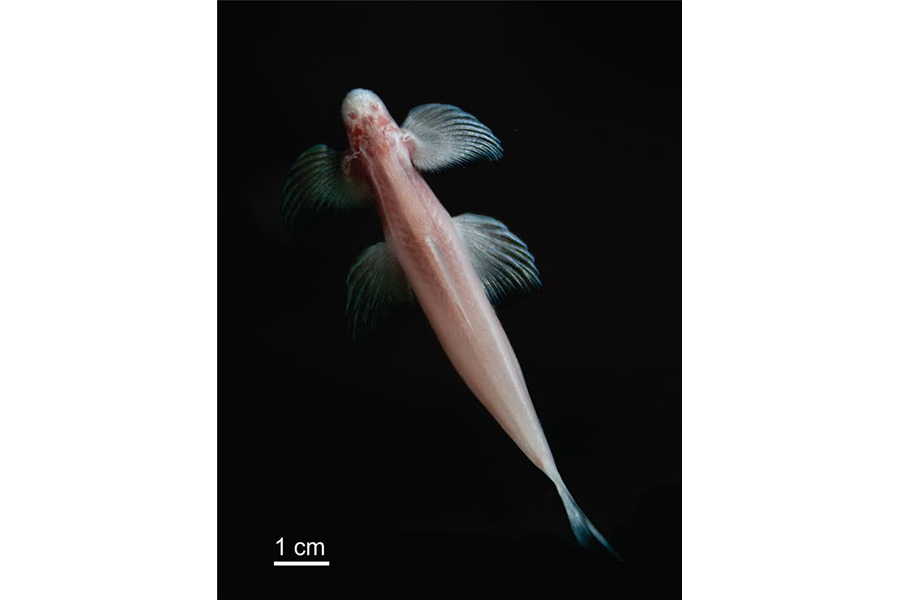Bizarre cavefish can walk like a four-legged land-dwelling creature
Loading...
Scientists at the New Jersey Institute of Technology have found a blind, but surprisingly mobile, cavefish in Thailand.
Other fish can “walk,” but none are quite like the blind Cryptotora thamicola. This fish is the only one of its kind that can walk and climb fast moving waterfalls, almost like a salamander.
These energetic little climbers don’t move like other fish, even fish that have developed the ability to walk on land. Instead, these walking cavefish have developed tetrapod-like features that allow them to move like those early landwalkers, which first developed the ability to move on land about 420 million years ago.
Tetrapods were the earliest four-limbed creatures to walk on land. Their features that allowed them to walk instead of swim included stiff spines made by interlocking vertebrae and the growth of pelvises to allow them to walk.
The walking cavefish have many of the same features as early tetrapods, researchers report in a paper published Thursday in the open-access journal Nature Scientific Reports.
“It possesses morphological features that have previously only been attributed to tetrapods,” said study co-author Brooke Flammang, an ichthyologist at Harvard University's Museum of Comparative Zoology, in a press release. “The pelvis and vertebral column of this fish allow it to support its body weight against gravity and provide large sites for muscle attachment for walking."
The cavefish’s pelvic girdle allows it to move with a side to side motion like a salamander, or what researchers describe in the study as a “standing wave.” Other fish move with the familiar undulating, or swaying, motion.
Although researchers just published their paper this week, the walking cavefish was discovered in 1985. The walking cavefish is native to caves in Thailand, and is considered a rare species.
Because the species is protected, researchers studied it by visiting the cave, taking video, and examining preserved specimens in Thai museums.
Scientists have found “trackways” made by dragging tetrapod fins in European caves that date back about 400 million years, but the earliest skeletal evidence they have of the creatures is from 375 million years ago.
Researchers are particularly intrigued by the walking cavefish because it offers a window into the evolution of four-legged creatures like the tetrapod.
“This research gives us insight into the plasticity of the fish body plan and the convergent morphological features that were seen in the evolution of tetrapods,” said Dr. Flammang.






